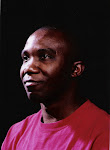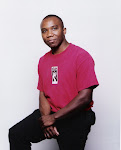One of the most overlooked contributions to film production is that of the still photographer. This is not just in terms of independently financed films but major ones as well but it is something that is very vital to a successful production and should never go overlooked. I’ve done still photography for many films both shorts and features and they all require the same thing – great pictures that accurately depict not only production stills from the film but also behind the scenes pictures of the production as well.
When talking about still photography for film it is important to know what the use of the pictures are for in order to understand how vital they are to the production. The pictures captured from any given production are mainly used for marketing and advertising as they provide the highest quality photographs of scenes from the film. These pictures are also used as historical documentation of the film as well as pictorial reference for many of the production’s many departments (i.e. wardrobe, location, continuity, cinematography, etc.).
In order to provide good still photography on any given film production here are five elements that all still photographers should know.
ELEMENT #1: TAKE GOOD PRODUCTION STILLS.
Generally speaking, production stills are any photographs taken on the set of a film production but more accurately the production stills I’m talking about here are the ones that represent scenes and shots from the actually film itself. It might surprise you know that the majority of photographs used in advertisements and promotions are actually still photographs and not images pulled from the video image or film negative (although images from film negative do provide just as high quality). Because many film productions have gone digital pulling stills from a video image is not the same as pulling images from a film negative. Digital images do not yield the same quality as a film image (although HD video images are in fact used very often) therefore it is not optimal to use such images. As video and digital technology advances the differences between the two are very subtle. It is a still photographers job to accurately replicate all the key images and shots on any production so that they can be used in promotions and marketing. When taking such pictures it is important that they represent and depict as close an image as the shot they are representing in order to be effective. When I worked on the Cake Baby Productions short film The Tedious Existence of Terrell B. Howell my primary responsibility was providing the production with accurate pictures of the film. Since it was a low budget film and the producers were fairly unacknowledged about what I do it was extremely important that I provided them photographs of every scene in the film for everything from the film’s poster to advertisements to the website.
ELEMENT #2: TAKE LOTS OF BEHIND-THE-SCENES STILLS.
This should go without saying but taking behind-the-scenes pictures of the cast and crew and the production itself are important. They not only depict the production and everyone that was a part of it but they provide the cast and crew with a history of the production that will not only be shared amongst themselves but to the public as well. Many times these photographs are used to show the scale of a production and all the people that were involved with the production on any given scene. These photographs are used for advertisements, magazines, websites, etc. and there importance should never go over looked or forgotten. While on the set of the Southlan-Films production Bad Land I had a multitude of photographs on not only all the make-up requirements but stunts (since we had a huge stunt team) and locations as well. I used the same techniques when I was on set of the company’s next film Evil In The Flesh.
ELEMENT #3: DO NOT GET IN THE WAY.
One of the most overlooked aspects of taking still photographs on a film production is the fact that the still photography should not get in the way of the production itself. I know the still photographer has a tough job with trying to take as many photographs of the production as possible from many different vantage points but it is important that the still photographer not become a nuisance on the film set which can just stress out not only the cast and crew but the director as well. Taking behind-the-scenes photographs can be taken at any time during the production but standard production stills of the scenes themselves should be taken before or after the scene in question is wrapped (I prefer after) and should be discussed with the director and cast and crew at the beginning of production so that everyone involved knows when the photographer will be taking the photographs. I’ve been on many film sets where this was not discussed before hand and the still photographer was trying to get photographs while the director was walking through a scene with his cast. The photographer got in the way and was putting both the director and the cast in an increasing stressful situation. This should be avoided at all costs.
ELEMENT #4: GET TO KNOW THE CAST & CREW.
A still photographer should get to know both the cast and the crew of the film production. Many times the photographer will stage photographs from scenes in the film not to mention take many group pictures of random cast and crew members and it is a good idea for the photographer to be able to call people by their first names. It may be a daunting task to remember so many new names and faces on any given film production but trust me it will be worth it. On the By The Lake Productions short film A Gift there was a huge cast of children that I had to learn the names for simply because the production wanted me to get a variety of group photographs at many of the different locations of the film. Knowing the children’s names made it easier and faster to call together any group of children at a moment’s notice. This also helped me with the over 60 cast & crew of the Southlan-Films production Hell’s End in which I had over 40 soldiers all of whose names I had to learn for the very same reason.
ELEMENT #5: HAVE FUN!
One of the things that most still photographers may forget while on the set of a film production is to have fun! If you’re not having fun than the people you’re taking pictures of aren’t having fun either. I’ve been taking still photographs on film sets for over a decade and I usually take 100 times more pictures than I probably should but I allow the cast and crew to have as much fun being in the pictures as I do taking them and this should never be forgotten. The more fun you have when taking photographs the more inspired and creative you will be and the better your pictures at the end of the day and trust me when you get that “money shot” the director or producer or cast or crew member will know and they will appreciate it forever.
In closing I just want to tell all the young still photographers out there that, yes, still photography is a job and it is vital to the success of any given film production but it should also be something that is fun and exciting.
Saturday, April 17, 2010
5 Elements to Being a Good Still Photographer on the Set of an Independent Film
Subscribe to:
Post Comments (Atom)








No comments:
Post a Comment